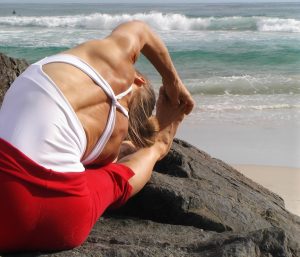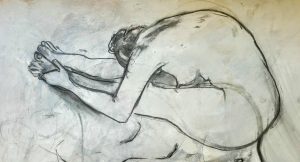Back pain accounts for an estimated 10 % of all primary care doctor visits each year, costing people worldwide millions. According to recent studies, many of these treatments can be unnecessary, and ultimately fail to address the problem.

When it comes to back pain, less treatment can be actually more beneficial in the long run.
“There’s evidence that many standard treatments for back pain — surgery, spinal injections, and painkillers — are often ineffective and can even worsen and prolong the problem…” (Medical News Today, January 2013)
An estimated 70% of Australians will suffer from chronic back pain at some point in life. Some 25-30 % end up struggling with persistent or chronic back pain, leading many to resort to prescription painkillers, expensive steroid shots, or even multiple surgeries.
These treatments do not always cure back pain—they often only treat the symptoms and can lead at times too strong addiction to painkillers.
In most cases, back pain is usually the result of simple biomechanical problems
In most cases, back pain is usually the result of simple biomechanical problems relating to poor posture, inflexibility, or improper movement, which are best prevented and managed by exercises that strengthen your back and abdominal muscles, as well as exercises that maintain proper function of the joints.
Exercise as a Tool to Improve Pain Tolerance
 According to some experts, in the absence of a mechanical problem, the pain may be caused by changes in your nervous system, making it send out false pain signals. Surgery will not do anything to correct this either.
According to some experts, in the absence of a mechanical problem, the pain may be caused by changes in your nervous system, making it send out false pain signals. Surgery will not do anything to correct this either.
Remember, back pain is frequently the gateway that leads people down a path to addiction to pain relief medication and lifelong disability. This doesn’t have to happen, but you need to be willing to look at other options beside painkillers and surgery as your go-to treatment.
What does science say?
Dr. Richard Deyo, an authority on evidence-based medicine at Oregon Health Sciences University, has studied extensively treatment of back pain expresses the following:
“One reason invasive treatments for back pain have been rising in recent years is the ready availability of MRI scans, these detailed, color-coded pictures that can show a cross-section of the spine but they can be dangerously misleading.”
”Seeing is believing,” Deyo says. “And gosh! We can actually see degenerated discs, we can see bulging discs. We can see all kinds of things that are alarming.”
That is, they look alarming. But they’re most likely not the cause of the pain. Lots of people who are pain-free actually have terrible-looking MRIs. And among those, who have MRI abnormalities and pain, many specialists question whether the abnormality is really the cause of the pain, and whether fixing it can make the pain go away.”
Dr. James Rainville, a rehabilitation medicine specialist at the New England Baptist Hospital in Boston, notes that some back pain may be related to the way your sensory system processes pain signals.
“Essentially, you may have hypersensitive nerves. While that may be true in some cases, I believe a much stronger case can be made for the theory that the vast majority of back pain is caused by mechanical problems related to poor posture and soft tissue that lacks regular hydration, oxygenation, and nourishment.”
Dr. Rainville believes that you can learn to more or less ignore your pain through exercise. He created a “back pain boot camp” where patients get six weeks of regular visits with specially trained therapists that teach them how to rebuild strength and flexibility in their backs. Part of this process is learning not to fear the pain, and not allowing it to stop you from moving and going about your life.
Posture-correcting exercises are a critical component when it comes to treating back pain.
It does make sense, that what you are doing most of the time is likely the source of the problem. There are of course instances where surgery may be warranted, although this should be the rare exception. Some studies have indicated that less than five percent of patients are good candidates for surgery.
Surgery may be indicated for conditions like:
- Severe spinal stenosis, Herniated discs, Tumors, Trauma, Scoliosis, and other spinal deformities
Surgery should be your absolute last resort.
- A surgical intervention and the multitude of repercussions that surgery introduces can never be undone.
- Surgery is an injury…extreme injury, even though controlled; it is often not addressing the foundational cause of the problem.
It is absolutely crucial to exhaust every single possible non-surgical option before you submit to surgery, including steroid shots that can cause enormous side effects and simply do not address the cause of the problem.
Uninterrupted Sitting Can Cause Back Pain.
If you are sitting regularly without interruptions you will likely die prematurely, but it will also disrupt a number of your vital bodily functions:
- Decreases the activity of lipoprotein lipase (LPL) which will increase your risk of cardiovascular disease.
- Can worsen insulin resistance.
- Can weaken your bones.
- Can harm your blood vessels.
- Doubles your risk of heart failure.
 It also decreases the motility of your organs as well as the mobility between the organs. Over time they literally become adhered together. It makes perfect sense that what you do all day long is going to have more impact than what you do a few hours a week in the gym or at some sport.
It also decreases the motility of your organs as well as the mobility between the organs. Over time they literally become adhered together. It makes perfect sense that what you do all day long is going to have more impact than what you do a few hours a week in the gym or at some sport.
It is advisable to make it a regular practice to get up at least every 15 minutes and engage in some movement even if only for a minute or less. Simply standing up would likely work but I think you can do better by addressing your posture and including some movement exercises.
A few simple Yoga postures like the forward bend “Uttanasana” a standing twist “Parivritta Tadasana” or the “shower pose” are easy to perform in an office space. A small routine of Yoga postures takes five minutes.
They open up the nooks and crannies of the body, areas that were compressed and starved of resources and Irrigates those areas with life-vitalizing fluids. The movements create a pumping action, pulling in the hydration, lubrication, oxygenation and other nourishment and pushing out metabolic wastes and toxins.
That is how simple the mechanics of the spine can be worked. The crucial point is to do it.

